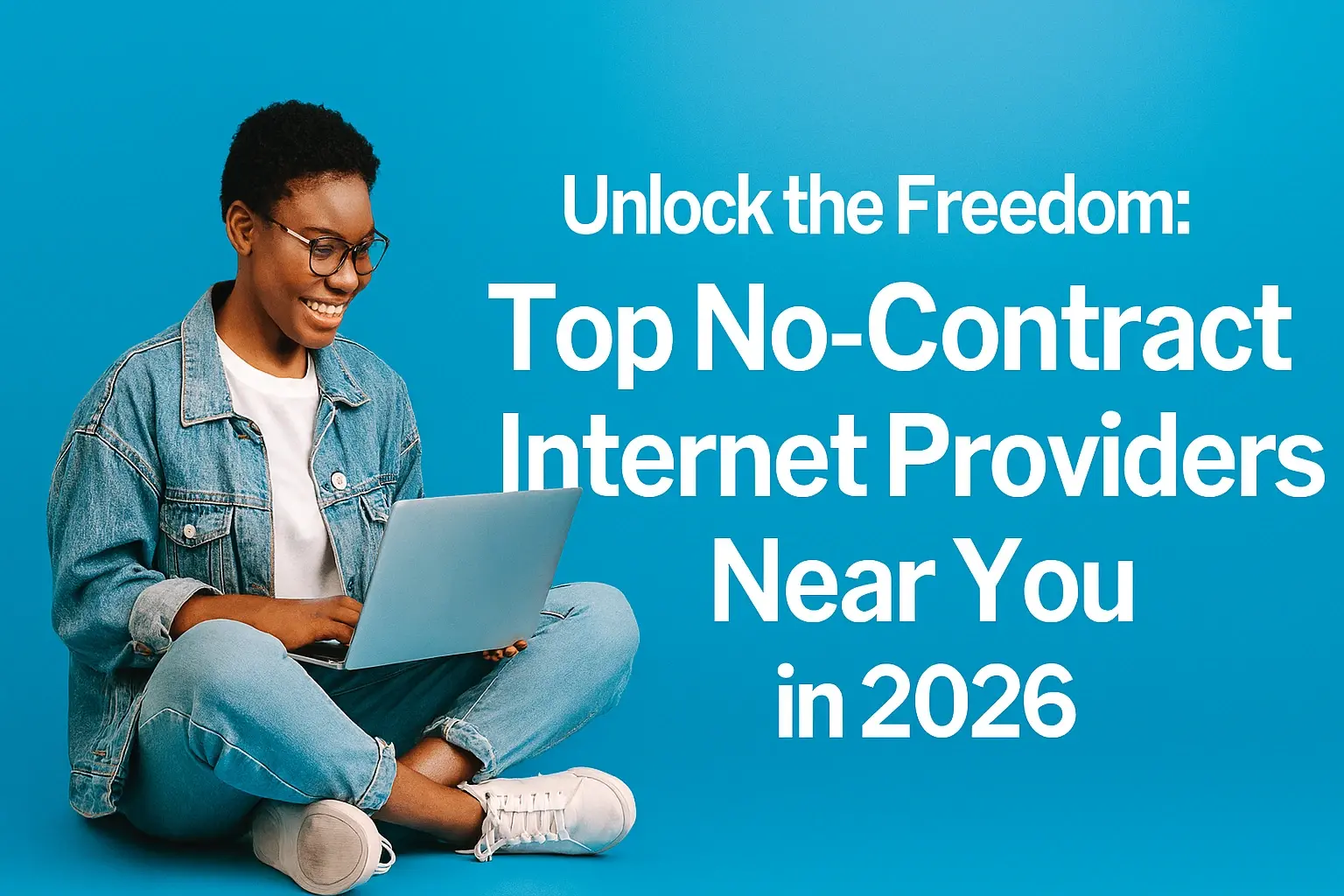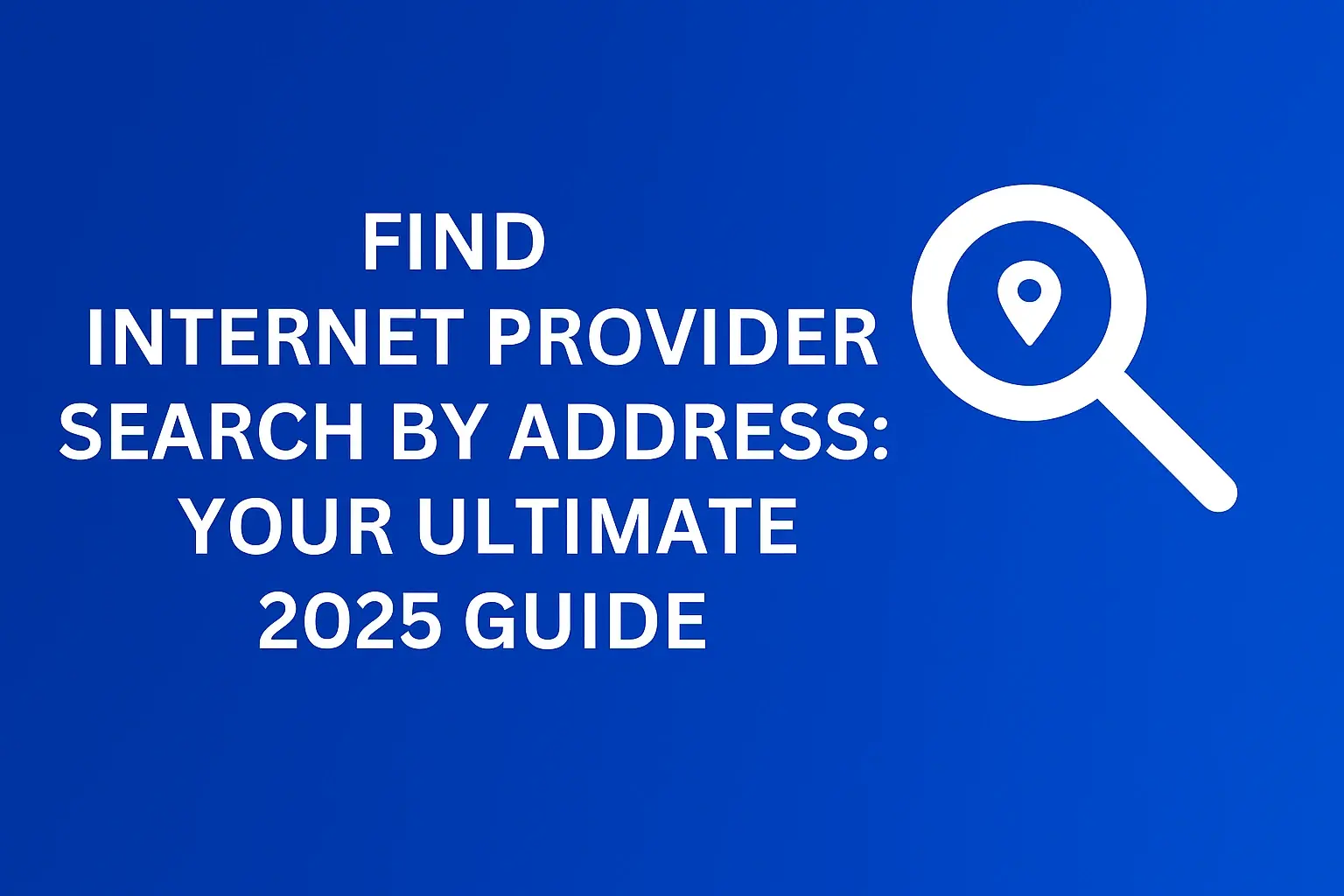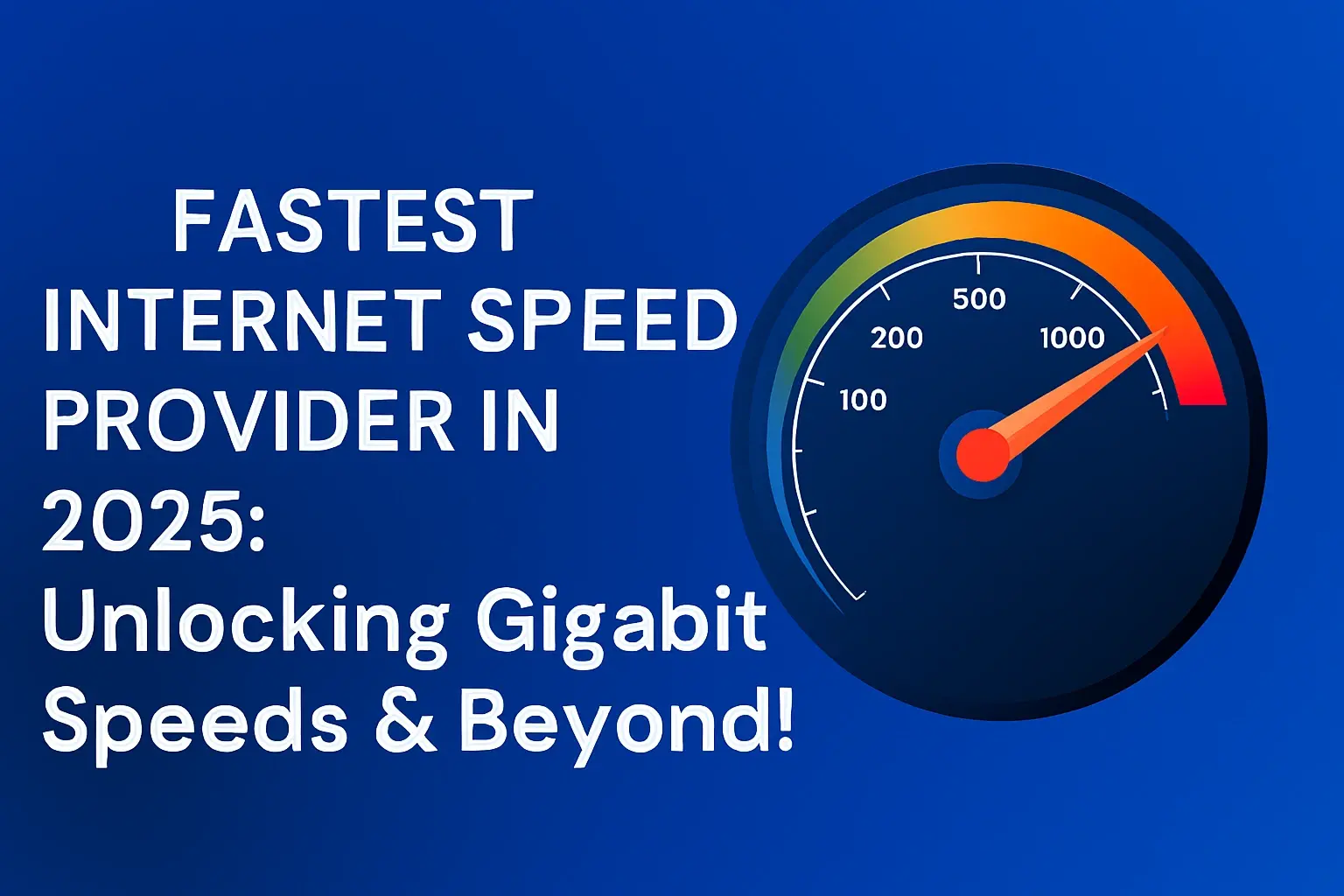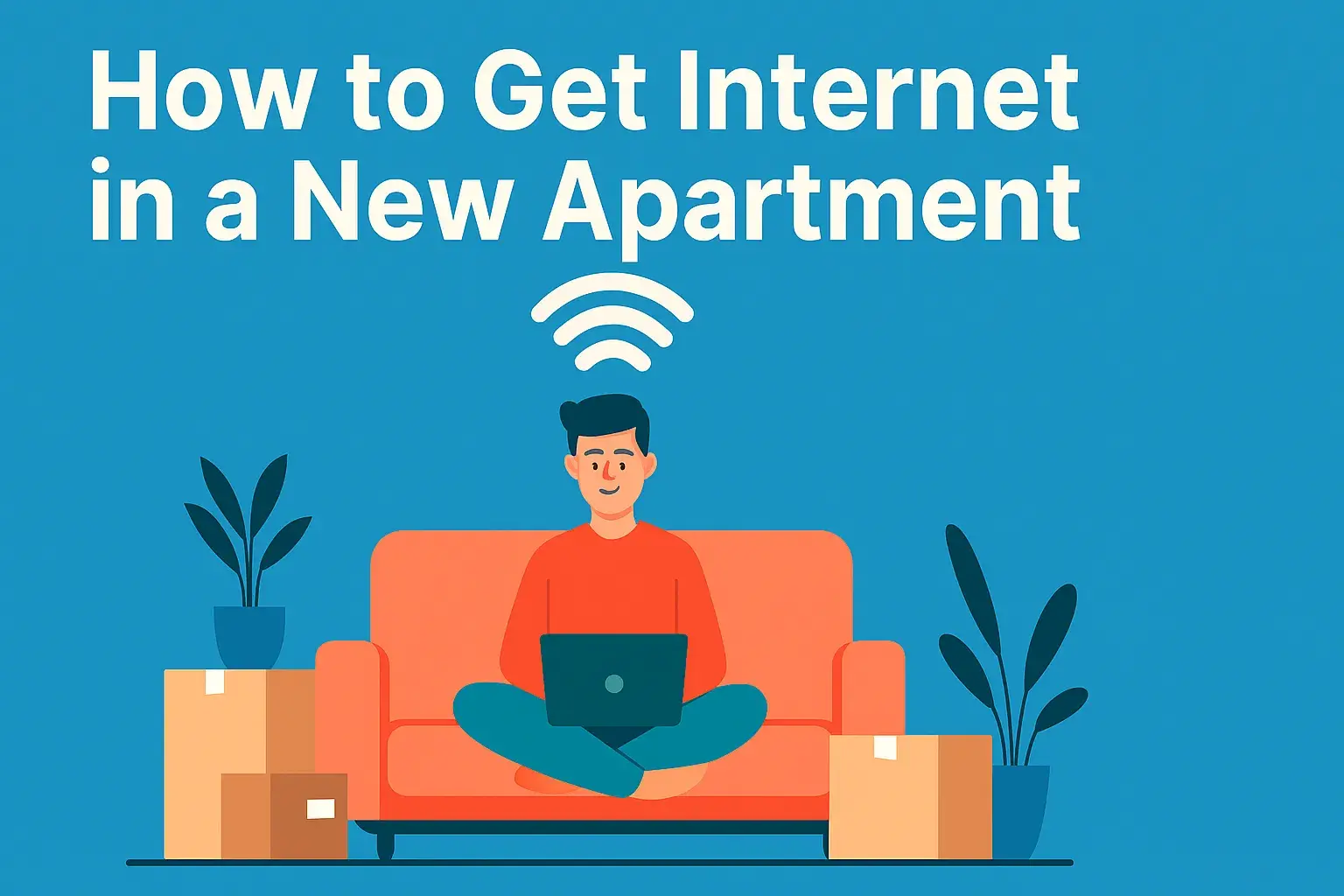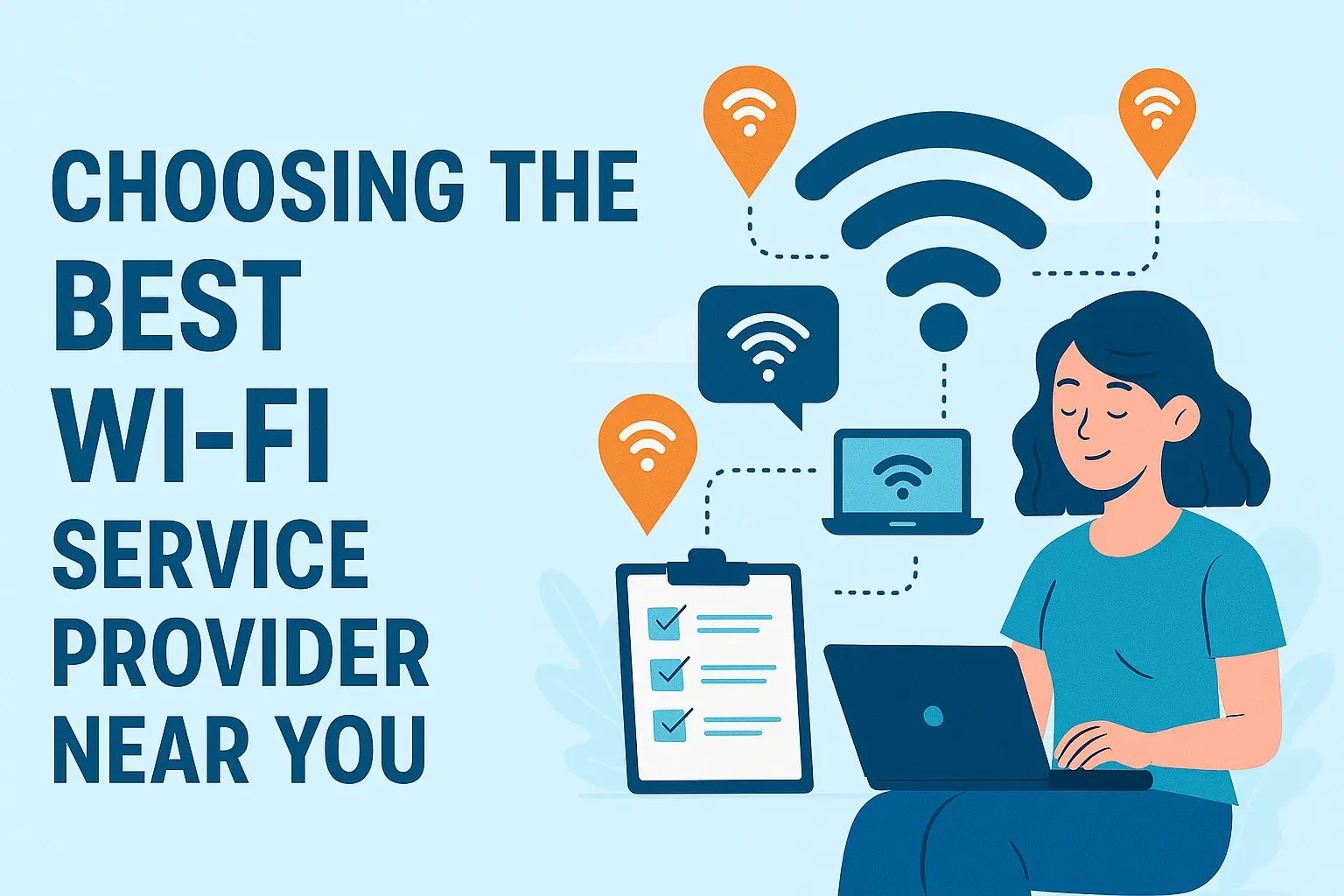Low-Cost Internet Providers: Saving Money Without Sacrificing Speed

Finding affordable internet without compromising on speed is a common challenge. This guide will help you navigate the options, understand the technologies, and discover the best low-cost internet providers for your needs in 2025, ensuring you get reliable service at a price you can afford.
Understanding Your Internet Needs
Before diving into the sea of internet providers, the most crucial first step is to honestly assess your household's internet usage. What do you primarily use the internet for? Are you a light user who only checks emails and browses occasionally, or do you have a family of streamers, gamers, and remote workers? Understanding this will prevent you from overpaying for a plan that offers far more bandwidth than you'll ever utilize, or conversely, being frustrated by a slow connection that can't keep up with your demands.
Assessing Your Household's Usage Habits
Consider the following questions to gauge your needs:
- Number of Users: How many people in your household will be using the internet simultaneously? More users generally mean a higher need for bandwidth.
- Primary Activities:
- Web Browsing & Email: This is the least demanding activity.
- Social Media: Requires moderate bandwidth, especially if you view videos.
- Streaming Video (SD, HD, 4K): This is a major bandwidth consumer. Standard Definition (SD) requires around 3-5 Mbps, High Definition (HD) around 5-10 Mbps, and 4K Ultra HD can demand 25 Mbps or more per stream.
- Online Gaming: While latency is often more critical than raw speed, downloading large game files requires significant bandwidth. Many online games recommend at least 10-25 Mbps for a smooth experience.
- Video Conferencing & Remote Work: Upload speeds become important here. A stable connection with at least 5-10 Mbps upload is recommended for clear video calls.
- Large File Downloads/Uploads: This could include software updates, large documents, or media files.
- Number of Devices: How many devices will be connected to the internet at any given time? This includes smartphones, tablets, smart TVs, gaming consoles, smart home devices (thermostats, speakers, cameras), and computers. Each device consumes a portion of your available bandwidth.
- Peak Usage Times: When is your internet usage highest? If everyone in the house is streaming or gaming during prime evening hours, you'll need a plan that can handle that simultaneous demand.
Defining Your Speed Requirements
Based on your usage assessment, you can start to define your speed requirements. Internet speeds are typically measured in Megabits per second (Mbps). Here's a general guideline for download speeds:
- 1-10 Mbps: Basic browsing, email, and light social media. Not suitable for streaming or multiple users.
- 10-25 Mbps: Good for a few users, streaming HD video on one or two devices, and general web use.
- 25-50 Mbps: Suitable for households with multiple users, simultaneous HD streaming, and moderate online gaming.
- 50-100 Mbps: Excellent for heavy streaming (including 4K), multiple users, online gaming, and faster downloads.
- 100+ Mbps: For very heavy users, large households with many connected devices, and those who frequently download/upload large files.
Don't forget upload speeds. While download speed is what you experience when consuming content, upload speed is crucial for activities like video conferencing, uploading photos and videos to the cloud, and online gaming. For most users, download speeds are prioritized, but if you work from home or frequently use video calls, aim for at least 5-10 Mbps upload.
Exploring Low-Cost Internet Connection Types
The type of internet connection available in your area significantly impacts both speed and cost. Understanding these technologies will help you identify which ones are likely to offer the most affordable options.
DSL (Digital Subscriber Line)
DSL internet uses existing telephone lines to transmit data. It's one of the oldest forms of broadband and is widely available, especially in rural or less densely populated areas where other infrastructure might be lacking.
- Pros: Often the cheapest option, widely available, uses existing phone lines (no new installation needed for the line itself).
- Cons: Speeds are generally slower than cable or fiber, speeds can degrade significantly the further you are from the provider's central office, and speeds can be affected by phone line quality. Upload speeds are typically much lower than download speeds.
- Cost: Expect to pay anywhere from $30-$60 per month for basic DSL plans.
- 2025 Outlook: While still a viable option for basic needs, DSL is gradually being phased out in favor of faster technologies where available.
Cable Internet
Cable internet uses the same coaxial cables that deliver cable television. It's a popular choice due to its widespread availability and relatively good speeds.
- Pros: Generally faster than DSL, good availability in most urban and suburban areas, often bundled with TV services for potential savings.
- Cons: Speeds can fluctuate during peak usage hours because the bandwidth is shared among users in a neighborhood. It's not typically as fast as fiber optic.
- Cost: Basic cable plans can range from $40-$70 per month, with faster tiers costing more.
- 2025 Outlook: Cable remains a strong contender for affordable, high-speed internet, especially with providers continually upgrading their networks.
Fiber Optic Internet
Fiber optic internet uses thin strands of glass to transmit data as light signals. It's the newest and fastest technology available.
- Pros: Extremely fast download and upload speeds, very reliable, less susceptible to interference and distance degradation.
- Cons: Availability is limited, primarily in newer developments or major metropolitan areas. It's often the most expensive option, though prices are becoming more competitive.
- Cost: While typically higher, some introductory fiber plans might start around $50-$80 per month for speeds that far surpass DSL or cable.
- 2025 Outlook: Fiber expansion is ongoing, making it a growing segment of the market. As availability increases, so does the potential for competitive pricing.
Satellite Internet
Satellite internet uses a satellite dish to connect to a satellite in orbit, which then communicates with a ground station. This is often the only option for very remote areas where wired connections are unavailable.
- Pros: Available virtually anywhere with a clear view of the sky.
- Cons: High latency (delay), which makes real-time activities like online gaming or video conferencing difficult. Speeds can be inconsistent and affected by weather. Data caps are common and can lead to throttling or extra charges. It's generally the most expensive option per Mbps.
- Cost: Plans can start around $60-$100 per month, often with significant data limitations.
- 2025 Outlook: While technologies like Starlink are improving satellite internet, it generally remains a last resort for those seeking truly low-cost and high-performance internet.
Fixed Wireless Internet
Fixed wireless uses radio waves to connect a home to a nearby tower. It's an alternative for areas where DSL or cable are not feasible but fiber is not yet available.
- Pros: Can offer better speeds than DSL in some areas, more affordable than satellite.
- Cons: Performance can be affected by distance, obstructions (trees, buildings), and weather. Availability is dependent on the provider's tower infrastructure.
- Cost: Prices can vary widely but may fall between DSL and cable, perhaps $40-$70 per month.
- 2025 Outlook: Fixed wireless is a growing technology, especially in rural broadband initiatives, offering a middle-ground solution.
Key Factors for Choosing a Budget-Friendly Provider
Once you understand your needs and the types of connections available, you can start evaluating specific providers. Several factors beyond just the advertised speed and price will influence whether a provider is truly "low-cost" and suitable for you.
Understanding Pricing Structures
Advertised prices are rarely what you pay long-term. Be aware of:
- Introductory Offers: Many providers offer attractive low prices for the first 6, 12, or 24 months. After this period, the price can increase significantly. Always ask for the "regular" or "standard" price after the promotional period ends.
- Equipment Rental Fees: You'll often need a modem and/or router. Providers may charge a monthly fee for renting this equipment, which can add $10-$20 per month to your bill. Consider purchasing your own compatible equipment if allowed, as it can save money over time.
- Installation Fees: Some providers charge a one-time fee for setting up your service. Look for providers offering free installation or promotions that waive this fee.
- Data Caps: Some plans, especially satellite and some fixed wireless or even older cable/DSL plans, come with data caps. Exceeding these caps can result in extra charges or throttled speeds, effectively making the plan more expensive and less reliable. Always check the data allowance and what happens if you go over.
- Contract Lengths: Many low-cost plans require you to sign a 12-month or 24-month contract. Breaking a contract early can incur hefty early termination fees. If you prefer flexibility, look for month-to-month plans, though these might be slightly more expensive.
Bundling Services
Many internet providers also offer cable TV, home phone, and even mobile services. Bundling these services can sometimes lead to significant discounts.
- Pros: Can offer a lower overall monthly bill compared to subscribing to each service separately. Simplifies billing with one provider.
- Cons: You might end up paying for services you don't use just to get a discount on the internet. If one service has an issue, it might affect others.
- Consideration: If you need TV and internet, explore bundle deals. However, don't feel obligated to bundle if you only need internet. Sometimes, separate providers for each service can be cheaper.
Promotional vs. Standard Pricing
This is a critical distinction. A $30/month plan for 12 months that jumps to $70/month thereafter is not truly a low-cost plan in the long run.
- Action: Always ask, "What will the price be after the promotional period?" and "Are there any other fees not included in the advertised price?"
- Example: Provider A offers 100 Mbps for $50/month for 12 months, then $80/month. Provider B offers 75 Mbps for $60/month standard price with no promotional period. For long-term savings, Provider B might be the better "low-cost" option if 75 Mbps meets your needs.
Availability in Your Area
The biggest hurdle to finding a low-cost provider is often availability. Not all providers operate in every location.
- How to Check: Visit the websites of major internet providers (e.g., Spectrum, Xfinity, Verizon Fios, AT&T, CenturyLink, Cox) and enter your address to see what plans and speeds are offered.
- Independent Search Engines: Use third-party comparison websites that allow you to input your address and see all available providers and plans in your specific area.
- Government Resources: In some regions, government websites (like the FCC in the US) provide tools to check broadband availability.
Customer Service and Reliability Ratings
A cheap internet plan is no bargain if the service is constantly down or the customer support is impossible to reach.
- Research: Look for independent reviews and ratings from sources like Consumer Reports, PCMag, CNET, and user forums. Pay attention to comments regarding uptime, speed consistency, and the quality of customer support.
- Ask Neighbors: If possible, ask friends, family, or neighbors in your immediate vicinity about their experiences with local providers.
Comparing Providers and Plans
With your needs defined and an understanding of pricing and availability, it's time to compare specific providers. We'll look at some common scenarios and provide examples of how to approach this comparison for 2025.
Hypothetical Comparison Table (Illustrative for 2025)
This table illustrates how you might compare providers. Actual prices and speeds will vary by location.
| Provider | Connection Type | Advertised Speed (Download/Upload) | Promotional Price (12 mos) | Standard Price (after 12 mos) | Equipment Fee (Monthly) | Data Cap | Contract |
|---|---|---|---|---|---|---|---|
| BudgetNet DSL | DSL | 25 Mbps / 3 Mbps | $35/mo | $55/mo | $10 (rental) | Unlimited | 12 months |
| SpeedyCable | Cable | 100 Mbps / 10 Mbps | $50/mo | $75/mo | $15 (rental) | 1 TB | 12 months |
| FiberFast | Fiber Optic | 300 Mbps / 300 Mbps | $65/mo | $85/mo | $0 (included) | Unlimited | None |
| RuralConnect Wireless | Fixed Wireless | 50 Mbps / 10 Mbps | $45/mo | $65/mo | $5 (rental) | 500 GB | None |
Analyzing the Table for Best Value
Let's break down the hypothetical table to find the best low-cost option for different user types:
- For the Light User (e.g., single person, basic browsing): BudgetNet DSL at $35/mo (promo) or $55/mo (standard) is the cheapest upfront. However, the low upload speed might be an issue for occasional video calls. If speed is less critical than cost, this is a contender.
- For the Average Household (e.g., couple, HD streaming, some remote work): SpeedyCable at $50/mo (promo) or $75/mo (standard) offers a good balance. The 100 Mbps download is sufficient for most activities. The 1 TB data cap is generous for most users. The standard price is a bit higher, but the initial savings are good. If you need more speed or have heavy internet usage, this might be limiting.
- For the Power User on a Budget (e.g., gamer, 4K streamer, multiple users): FiberFast at $65/mo (promo) or $85/mo (standard) offers superior speeds and no data caps. While the standard price is the highest, the symmetrical speeds and reliability are unmatched. If you can afford the initial promotional price and are willing to pay the standard price for top performance, this is the best long-term value if available.
- For Rural Areas (where fiber/cable are unavailable): RuralConnect Wireless at $45/mo (promo) or $65/mo (standard) might be the best available option. The 50 Mbps download is decent, but the 500 GB data cap needs careful monitoring. If you exceed this, the cost could rise significantly.
Checking for Hidden Fees and Fine Print
This cannot be stressed enough. Always ask for a full breakdown of all potential charges.
- Example: A $40/month internet plan might end up costing $65/month after equipment rental, taxes, and regulatory fees.
- Action: Request a "total estimated monthly bill" that includes all foreseeable charges.
Government Assistance Programs
In many countries, there are programs designed to help low-income households afford internet access.
- In the US: The Affordable Connectivity Program (ACP) provides a discount of up to $30 per month (or up to $75 per month for households on Tribal lands) towards internet service. Many providers offer plans that are entirely free or very low-cost when combined with the ACP discount. Check the FCC website for eligibility and participating providers.
- Other Countries: Research similar programs in your region. These can be a game-changer for making internet truly low-cost.
Strategies for Negotiating and Saving Even More
Don't be afraid to negotiate! Internet providers often have room to offer better deals, especially if you're a new customer or if you're threatening to leave.
The Art of the Call: How to Negotiate
When calling your current provider or a competitor, follow these steps:
- Do Your Homework: Know what other providers in your area are offering for similar speeds. Have their prices and plan details ready.
- Be Polite but Firm: Start by explaining your situation – you're looking for a lower monthly bill.
- Mention Competitors: "I've been a loyal customer for X years, but I'm finding that [Competitor Name] is offering a similar speed for $Y less per month. Can you match or beat that price?"
- Ask About Promotions: Inquire about any current new customer deals, loyalty discounts, or limited-time offers you might be eligible for.
- Threaten to Leave (Gently): If they can't offer a better price, politely state that you may have to consider switching. Often, this is when they'll check for retention offers.
- Escalate if Necessary: If the first representative can't help, ask to speak to a supervisor or someone in the "customer retention" department.
Leveraging Competitor Offers
If a competitor offers a lower price for comparable service, use it as leverage.
- Example: If Provider A offers 100 Mbps for $70/month, and Provider B offers the same for $60/month, call Provider A and say, "Provider B is offering me 100 Mbps for $60. Can you match that price?" Many providers will happily match or even beat a competitor's offer to keep your business.
Reviewing Your Bill Regularly
Don't just set it and forget it. Review your internet bill every few months, especially after any promotional period ends.
- Check for Price Increases: Ensure you're not being charged more than you agreed upon.
- Identify Unnecessary Fees: See if any equipment rental fees or other charges can be eliminated.
- Re-evaluate Your Needs: Has your usage changed? Could you downgrade to a cheaper plan without impacting your experience?
Considering Older or Slower Plans
If your initial assessment showed you don't need blazing-fast speeds, don't overlook the entry-level plans.
- Example: A 50 Mbps plan might be perfectly adequate for a single person or a couple who primarily browse and stream in HD. This will almost always be cheaper than a 200 Mbps plan.
- The Trade-off: The key is to find the sweet spot – enough speed for your needs without paying for excess.
Potential Pitfalls and How to Avoid Them
Navigating the world of internet providers can be tricky. Being aware of common pitfalls can save you money and frustration.
Data Caps and Overage Charges
As mentioned, data caps are a major concern.
- How to Avoid:
- Prioritize providers and plans with unlimited data.
- If data caps are unavoidable, monitor your usage closely. Many providers offer tools to track your data consumption.
- Understand the overage charges. Sometimes, exceeding a cap by a small amount can lead to unexpectedly high bills.
- Consider a slightly more expensive plan with a higher data cap or unlimited data if you consistently approach your limit.
- 2025 Note: While unlimited data is becoming more common, especially with fiber, some cable and fixed wireless plans still impose caps.
Throttling and Network Congestion
Even with unlimited data, some providers may "throttle" (slow down) your speeds during peak hours or after you've used a certain amount of data, even if it's not a hard cap.
- How to Avoid:
- Research providers known for consistent speeds and good network management.
- Fiber optic connections are generally less prone to throttling and congestion than cable or DSL.
- Read reviews specifically mentioning speed consistency during peak hours.
Hidden Fees and Price Hikes
This is a recurring theme because it's so common.
- How to Avoid:
- Get all pricing details in writing before signing up.
- Understand the exact duration of any promotional pricing and the price thereafter.
- Ask about all potential fees: installation, equipment rental, activation, early termination, etc.
- Be prepared to re-negotiate your contract before it expires to avoid automatic price increases.
Contracts and Early Termination Fees (ETFs)
Being locked into a contract can be costly if your needs change or you find a better deal.
- How to Avoid:
- Look for providers that offer month-to-month plans.
- If a contract is required, understand the exact ETF amount and the contract length.
- Weigh the savings of a contract plan against the risk of paying an ETF if you need to switch.
Poor Customer Service
When things go wrong, you want a provider that makes it easy to get help.
- How to Avoid:
- Read customer reviews focusing on support quality, response times, and problem resolution.
- Check if the provider offers multiple support channels (phone, chat, email).
- Consider providers that are known for good customer service, even if they are slightly more expensive, as the peace of mind can be worth it.
Future Trends in Affordable Internet Access
The landscape of internet service is constantly evolving, with new technologies and policies aiming to make access more affordable and widespread.
Expansion of Fiber Networks
The push for fiber optic infrastructure continues globally. As more areas gain access to fiber, competition increases, which can drive down prices for high-speed internet.
- Impact on Cost: While fiber is often perceived as premium, increased availability and competition are making it more accessible. Many providers are now offering entry-level fiber plans that are competitive with cable prices.
- 2025 Focus: Expect continued government initiatives and private investment in expanding fiber to underserved and rural communities.
5G Home Internet
5G technology, initially known for mobile devices, is also being deployed for home internet services. Providers use cellular towers to deliver internet wirelessly to homes.
- Pros: Can offer competitive speeds, often with no data caps and simpler pricing than traditional providers. Installation can be plug-and-play.
- Cons: Availability is still limited and dependent on 5G tower density. Performance can vary based on signal strength and network congestion.
- Cost: Many 5G home internet plans are priced competitively, often in the $50-$70 range with unlimited data.
- 2025 Outlook: 5G home internet is rapidly expanding and is becoming a strong contender for affordable, high-speed broadband, especially in areas where wired options are limited or expensive.
Government Initiatives and Subsidies
Governments worldwide recognize internet access as a necessity. Programs like the ACP in the US are designed to bridge the digital divide.
- Continued Support: Expect ongoing funding and policy changes aimed at making internet more affordable, particularly for low-income households, students, and rural residents.
- Impact: These subsidies can drastically reduce the out-of-pocket cost for eligible individuals, making even premium services affordable.
Increased Competition
As more providers enter the market (especially with technologies like 5G and expanded fiber), competition naturally intensifies.
- Benefits for Consumers: More choices lead to better pricing, improved service, and more innovative plan structures. Providers are more motivated to offer deals and retain customers.
- 2025 Trend: The market is becoming more dynamic, with a greater variety of providers and service types available to consumers.
By staying informed about these trends, consumers can better position themselves to take advantage of emerging affordable internet solutions.
Conclusion
Securing low-cost internet without sacrificing essential speed is an achievable goal in 2025. The key lies in a thorough understanding of your household's specific internet needs, a clear grasp of the available connection technologies, and a diligent approach to comparing providers. Always look beyond the advertised promotional price to uncover the true long-term cost, factoring in equipment fees, potential price increases, and contract terms. Explore government assistance programs like the Affordable Connectivity Program, which can significantly reduce your monthly bill. Don't hesitate to negotiate with providers, leveraging competitor offers to secure the best possible deal. By avoiding common pitfalls like unexpected data overage charges and understanding your contract's fine print, you can ensure a reliable and affordable internet connection. The evolving landscape, with expanding fiber networks and the rise of 5G home internet, promises even more competitive and cost-effective options in the near future. Make informed choices, prioritize value over the lowest advertised price, and you'll find an internet plan that perfectly balances your budget and your connectivity demands.
